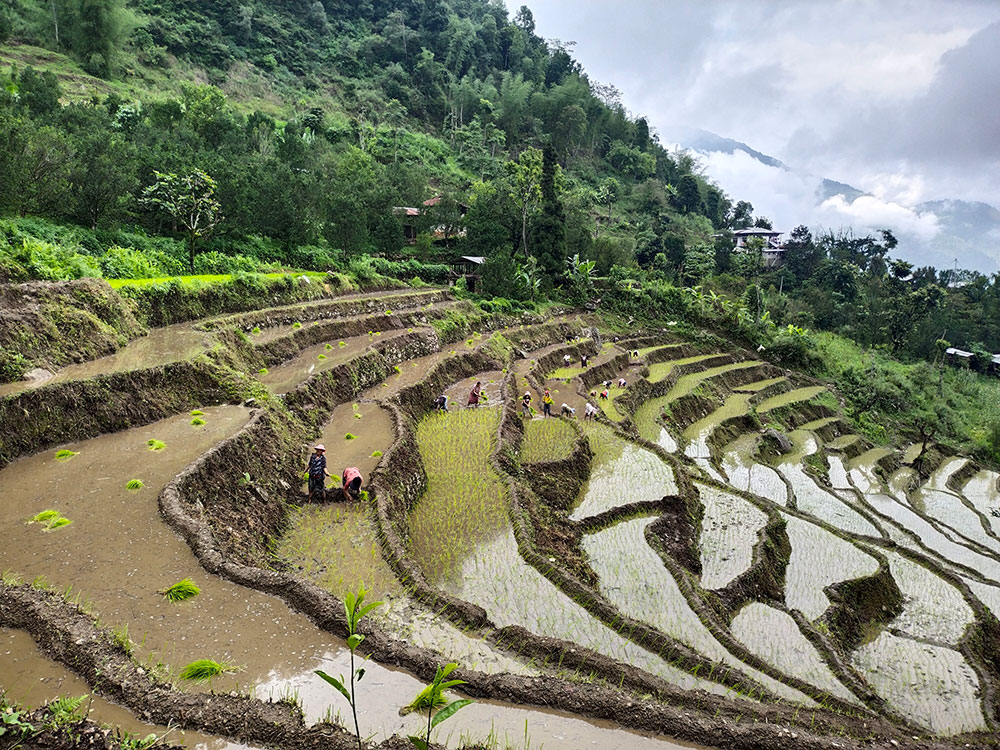Jigme Wangchuk
In the symphony of living landscapes, nature and human endeavours waltz in harmony. Envision a vibrant tapestry, intricately woven to preserve biodiversity, upholding ecological processes, and sustaining environmental health, all while meeting the crucial needs of local communities.
This is a dream that Bhutan has been trying to achieve and set an example for the world beyond in collaboration with the World Wildlife Fund Bhutan.
The natural and immediate question, so, is: Why do we have to champion “living landscapes” in the country?
The answer lies in the profound, long-term benefits they yield.
By striking a balance between development and conservation, Bhutan’s diverse landscapes can secure sustainable livelihoods, protect biodiversity, and contribute to the overall well-being of both nature and society.
Put simply, living landscapes refer to areas where the natural environment coexists harmoniously with human activities. It is a concept that emphasises sustainable and balanced interactions between people and the surrounding ecosystems.
In a living landscape, there is a conscious effort to preserve biodiversity, support ecological processes, and maintain the overall health of the environment while meeting the needs of the local communities.
Think of a living landscape as a dynamic and interconnected system where nature and human activities complement each other. This approach recognises the importance of preserving natural resources, protecting wildlife habitats, and fostering a resilient ecosystem.
Agriculture and food security
Bhutan’s landscapes are deeply intertwined with agriculture, a vital sector for the nation’s economy. Living landscapes contribute to sustainable farming practices by integrating eco-friendly methods, preserving natural resources, and ensuring the longevity of agricultural activities. This approach aligns with Bhutan’s dream of achieving food security, dating back to its decision to break free from self-imposed isolation in the 1960s.
Cultural identity and tourism
Bhutan, renowned for its rich biodiversity, sees living landscapes as guardians of its cultural heritage. These landscapes help maintain scenic beauty, traditional practices, and spiritual significance, contributing to the nation’s cultural identity.
With the country’s commitment to being carbon-neutral, living landscapes also play a crucial role in sequestering carbon, mitigating climate change effects, and sustaining tourism in an eco-friendly manner.
Sustainable development and community well-being
Living landscapes promote the well-being of local communities by fostering a balance between development and conservation. Access to clean water, fresh air, and a healthy environment directly contributes to the physical and mental health of the population. Bhutan’s innovative projects, such as the Wangchuck Centennial Park and Bhutan for Life Initiative, exemplify a holistic strategy aligning conservation and sustainable development.
Biodiversity conservation and global impact
Bhutan, nestled in the Eastern Himalayas, is a biodiversity hotspot with diverse ecosystems. Living landscapes, aligned with Bhutan’s unique development approach, safeguard high conservation values like biodiversity and ecosystem services. These efforts extend beyond Bhutan’s borders, playing a pivotal role in global biodiversity conservation and contributing to the resilience of the planet’s ecosystems.
Sustainable agriculture practices
Living landscapes actively promote sustainable agricultural practices in Bhutan. Examples include agroforestry techniques, organic farming methods, crop rotation, and terrace farming. These practices showcase the synergy between traditional wisdom and modern sustainability, resulting in increased crop yields while preserving the integrity of the land.
Climate resilience and carbon neutrality
Strategically preserved forests within living landscapes act as carbon sinks, aligning with Bhutan’s goals of carbon neutrality. Sustainable forestry practices, afforestation initiatives, and reliance on renewable energy further contribute to mitigating climate change impacts. Community-based conservation efforts engage local populations in safeguarding ecosystems, enhancing resilience against climate change effects.
Tourism and conservation
Bhutan’s approach to tourism reflects a delicate balance between economic benefits and environmental preservation. Guided by “high-value, low-impact” principles, the country ensures that tourism practices coexist harmoniously with the protection of natural landscapes. Strict regulations, community-based initiatives, and responsible visitor management contribute to sustainable tourism practices.
Community involvement and empowerment
Community-led conservation initiatives empower local communities to actively engage as stewards of their environment. Projects like the Merak-Sakteng Community Conservation Project and watershed management initiatives involve locals in sustainable resource management, fostering a sense of responsibility and ownership.
Challenges and solutions
Bhutan faces challenges such as human-wildlife conflict, limited resources, population pressure, and the delicate balance between tourism and conservation. Innovative solutions, including wildlife mitigation strategies, international collaborations, family planning integrated with conservation, and sustainable tourism practices, demonstrate Bhutan’s commitment to overcoming these challenges.
Future outlook and global impact
Bhutan envisions a future where living landscapes seamlessly integrate environmental conservation with sustainable development. The country aspires to expand its network of protected areas, strengthen international collaborations, and contribute to global biodiversity conservation. Bhutan sees itself as a significant contributor to global conservation technologies and a beacon of harmony, showcasing the inseparability of environmental sustainability and human well-being.
Bhutan’s pursuit of living landscapes represents a holistic model that balances economic progress with environmental stewardship, emphasising the coexistence of vibrant ecosystems, thriving communities, and sustainable development principles.


